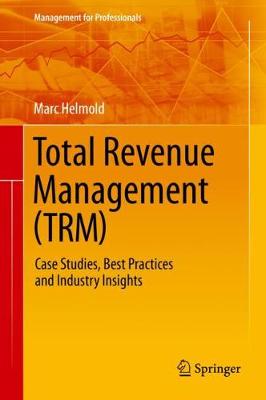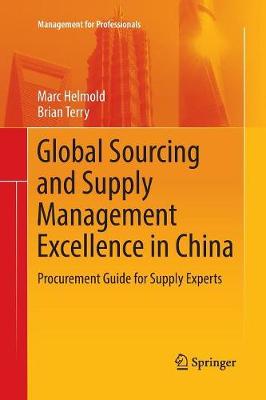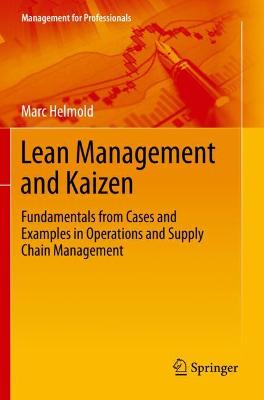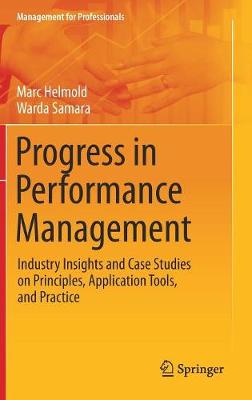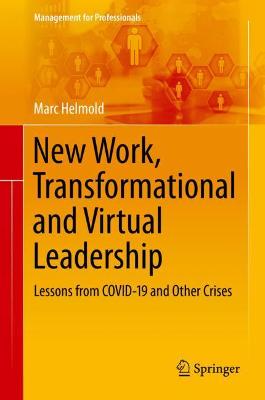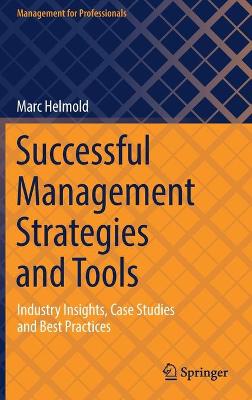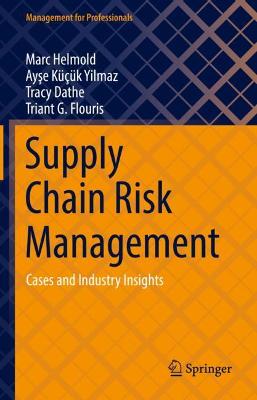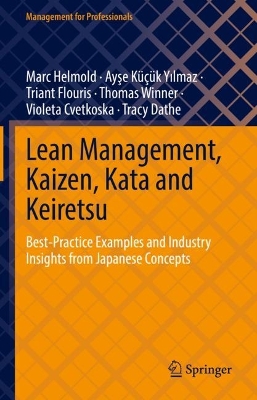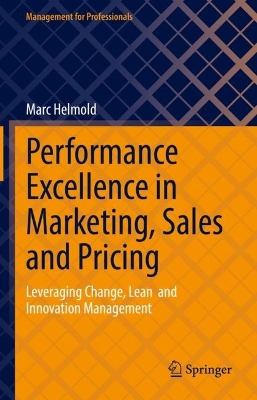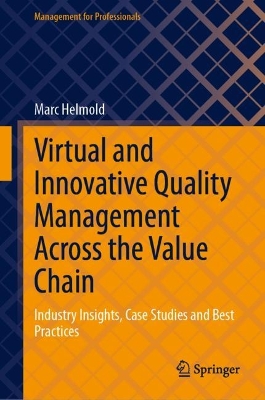Management for Professionals
13 total works
Global Sourcing and Supply Management Excellence in China
by Marc Helmold and Brian Terry
This book provides a holistic and pragmatic approach to performance management throughout the business value chain, and demonstrates the optimal design and use of performance management in order to achieve competitive advantage. A wealth of best practices, case studies and real-world examples are used to reveal the diversity of performance measurement methods, methodologies and principles in practice.
Readers will gain comprehensive insights into the status quo of performance management, including primary functions such as supply, operations and sales, and secondary functions like finance, human resources, and information systems. Focusing on ‘best-in-class’ performance excellence, the book offers the ideal guide for any organization pursuing competitive advantages across all corporate functions and focusing on value-adding activities.
The increasing globalization, the battle for talents, and global trends are changing the work patterns in organisations around the globe. Enterprises are working across country and cultural borders alongside complex supply and demand networks. Global incidents such as the financial crisis in 2008 and the recent COVID-19 pandemic have forced global organizations to find innovative ways to continue to connect globally and maintain a competitive advantage. Therefore, innovative enterprises have established global and virtual organisations including members of the value chain on supply and demand side.
This book outlines these new work and leadership styles, and agile organisations, which are necessary to work virtually and globally. It provides case studies and experiences from different global organizations in different industries and sectors with a focus on value-adding processes and services.
A wealth of best practices, industry examples and case studies are also included.
Supply Chain Risk Management
by Marc Helmold, Ayse Kucuk Yilmaz, Tracy Dathe, and Triant G. Flouris
This book provides a holistic and practical approach to managing supply chains risks and presents a new framework model for sustainable optimization of risk management. This framework includes supportive tools for risk mapping and strategic decision-making. Managers can apply tailored versions of this framework for the management process of their respective sector.
The authors provide case studies in industries such as automotive, aviation, airport, and healthcare.
Corporate Social Responsibility (CSR), Sustainability and Environmental Social Governance (ESG)
by Tracy Dathe, Rene Dathe, Isabel Dathe, and Marc Helmold
This book provides a comprehensive overview of corporate social responsibility (CSR) and its practical applications. In addition to the structured procedure with definitions and CSR approaches, functions within the value chain are described in comprehensive manner with reference to business practice. Business trends in special sectors such as innovation management and hospitality management are also covered. Numerous practical examples and country-specific recommendations for decisions in practical situations are also offered.
Fierce competition in many industries, megatrends, the COVID-19 pandemic, the ongoing globalisation and the permanent liberalisation of markets have changed the face of economies and businesses drastically. Companies must establish suitable and long-term strategies and performance criteria in order to survive in this dynamic and hostile environment. This book provides a holistic and practical approach to strategic performance management. It combines all functions of the value chain and contains best practices in performance. The author demonstrates how new paradigms enable companies to concentrate on value-adding activities and processes to achieve a long-term sustainable and competitive advantage. The book contains a variety of best practices, industry examples and case studies. Focusing on best-in-class examples, the book offers the ideal guide for any enterprise to achieve a competitive advantage across all business functions focusing on value-adding activities.
Lean Management, Kaizen, Kata and Keiretsu
by Marc Helmold, Ayse Kucuk Yilmaz, Triant Flouris, Thomas Winner, Violeta Cvetkoska, and Tracy Dathe
This book provides a holistic and practical approach to Japanese concepts of lean management throughout the business value chain. It explains principles like Kaizen, Kata or Keiretsu in a pragmatic and logical way with many industry examples and case studies. The authors describe comprehensively how lean management enables companies to concentrate on value-adding activities and processes to achieve a long-term, sustainable competitive advantage. Moreover, the book shows how lean management principles are ultimately applied in industries like aviation, civil engineering, automotive, healthcare, education and other industries.
The increasing interconnection and the unlimited exchange of data and information has led to a maximized transparency of globally offered and sold products and services. The desires, needs and wants of the consumer are the critical issues today in creating new or offering existing products and services. This book outlines successful marketing and sales strategies with a clear focus on practical relevance. It provides a systematic overview and description of selling, pricing and negotiation concepts which enable the reader to apply the best-case scenario in their company. Tools such as the marketing mix or marketing strategies are well explained for practical application in industry. The book also integrates elements of change, lean and innovation management as drivers for performance excellence.
Featuring industry case studies, this book is a practical guide for marketing professionals, academics and policy makers to enable enterprises to achieve long-term competitive advantages through best-in-class marketing, sales and pricing activities.
Virtual and Innovative Quality Management Across the Value Chain
by Marc Helmold
This book provides professionals and academics with a holistic and practical approach to virtual and innovative quality management (QM) throughout the business value chain. It describes how to manage the value change from the supply side combining all functions of the value chain and contains best practices in performance, particularly in the production, trading, service, and information industries. It explores such topics as integrated management systems (IMS), extended reality, artificial intelligence, and environmental social governance (ESG). Industry examples and case studies are used to reveal the diversity of opportunities for QM methodologies and principles. This book is an ideal guide for professionals and practitioners who wish to incorporate QM concepts to achieve a competitive advantage across all business functions.
Business Opportunities and Risks in China
by Tracy Dathe, Volker Müller, and Marc Helmold
The rise of China poses a significant challenge to the existing, Western-dominated world economic order. The effectiveness of the Regional Comprehensive Economic Partnership (RCEP) is contingent on a smooth transition of the world’s economic center toward the Asia-Pacific Region. For Western investors, the vast market opportunities can be tempting. However, the lack of experience and knowledge of international management in China – a country with radically different business rules and cultural background – poses a substantial risk.
This book provides comprehensive insights into the fast-changing business world in China. Based on the authors’ theoretical knowledge and invaluable years of practical experience, it discusses the various options for doing business in China, with current examples that demonstrate how European SMEs can successfully position themselves between multinational companies and local competitors. It also highlights new opportunities arising from China’s international involvement (New Silk Road, RCEP) and addresses risk management for European SMEs operating in China. Moreover, it sheds light on how to form relationships of mutual trust between Chinese policymakers and their advisors/cooperation partners from abroad.
Readers with an interest in doing business in China will find this book particularly valuable.
